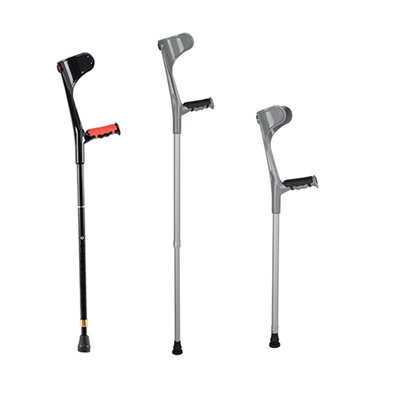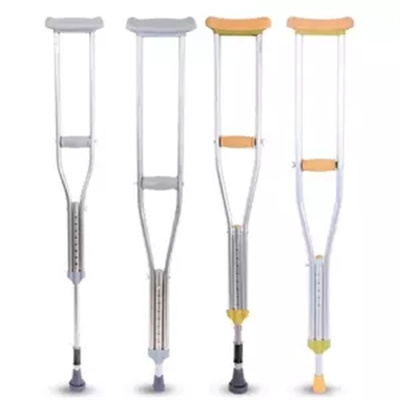There are several types of crutches, each with its own advantages and disadvantages. Here are some common types of crutches and their pros:
1. Underarm (Axillary) Crutches:
- Pros:
- Widely available and easy to find.
- Provide good upper body support, which can be helpful for individuals with limited strength or balance.
- Adjustable height for a custom fit.
- Suitable for a wide range of injuries and conditions.
2. Forearm (Lofstrand) Crutches (Elbow Crutches):
- Pros:
- Allow for greater mobility and control compared to underarm crutches.
- Encourage a more natural arm swing while walking.
- Provide better stability and balance.
- Ideal for long-term use and individuals with good upper body strength.
3. Platform Crutches:
- Pros:
- Provide full support for the forearm, making them comfortable for extended use.
- Allow for hands-free use, which can be helpful for individuals with limited hand strength or dexterity.
- Excellent stability and balance.
- Can be used by individuals with various types of mobility limitations.
4. Mobilegs (Articulating Crutches):
- Pros:
- Unique design with a saddle-like cradle that reduces pressure on the underarms and wrists.
- Provide excellent comfort and stability.
- Promote a more natural walking gait.
- Suitable for a range of mobility needs.
5. Platform Attachments for Standard Crutches:
- Pros:
- Add a platform to standard underarm crutches, providing additional forearm support.
- Help reduce pressure on the underarms.
- Can be a cost-effective alternative to full platform crutches.
6. Hands-Free Crutches:
- Pros:
- Allow users to rest the injured leg on a platform and use their knee to propel themselves forward.
- Provide a more comfortable and natural walking experience.
Each type of crutch has its own set of advantages, and the choice largely depends on the individual’s specific needs, mobility level, and comfort preferences. It’s important to consult with a healthcare professional or physical therapist to determine the most suitable type of crutches for your condition and to receive proper guidance on their use. The goal is to ensure that your crutches provide you with the best support, comfort, and mobility during your recovery or while managing mobility limitations.




















